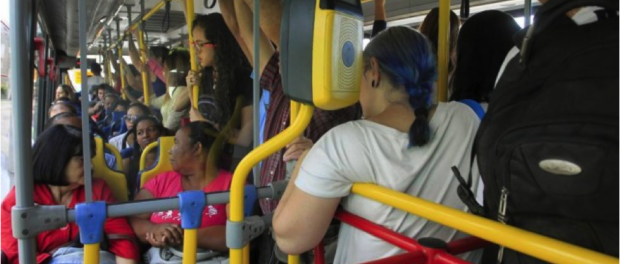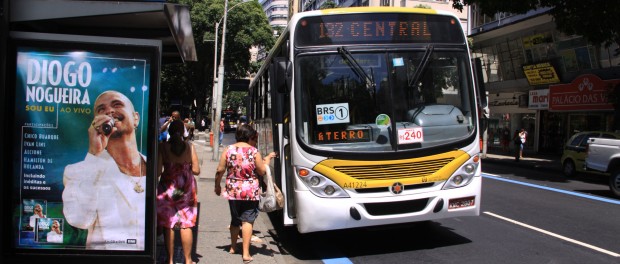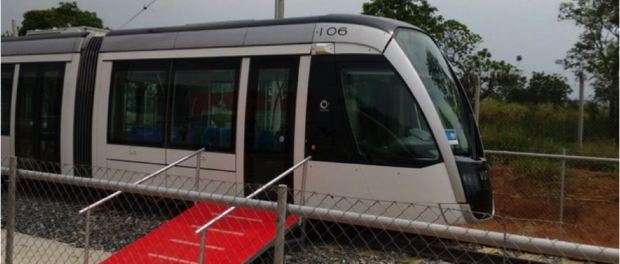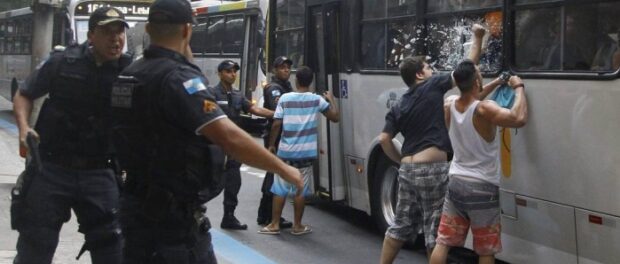
Set with the task of hosting World Cup Games and the 2016 Olympics in the span of two years, Rio de Janeiro’s Mayor Eduardo Paes has invested billions of reais in a wide range of transport development projects. Meanwhile, however, the primary and traditionally most important form of urban transport–the city’s buses–are suffering massive cuts that have left many passengers reeling.
On October 3, the city nixed 11 bus lines traveling from the West Zone to the city center, replacing them with five new lines which require a transfer at Botafogo in the South Zone. On October 24, another eight lines from the North Zone and city center to the South Zone were eliminated, and eight additional lines were shortened; two new lines were added their place. Ultimately, the Municipal Transport Secretariat (SMTR) will cull its fleet by 35%, or 700 buses, with 70 lines replaced by 16 new routes by March 2016. The schedule of planned changes for 2015 has already been adjusted along the way.
“[This consolidation] is in compliance with the mayor’s plan, the objective of which is to implement new networks of mobility in the city, improve the flow of public transport, and reduce transit times for passengers,” the SMTR said in a statement.
For residents traveling to the commercial center and South Zone, however, mobility is declining. Previously, passengers could take one bus to the center via the South Zone from neighborhoods like Vargem Grande in the West Zone. But with the new truncated bus lines, commuters have to take an extra bus, prolonging their commute.
Thus, riders have no choice but to get accustomed to increased travel times. “We end up having to change our routine or we’ll be fired,” said Igor Portes, 31, in an interview with EXTRA.
Cost is another issue. With the Bilhete Único (Single Ticket), Rio’s bus pass, users can transfer from one bus to another with a single fare ticket (R$3.40), so long as the connection is made within two and a half hours. These new routes, however, force commuters from the fringes of the city to scramble to reach their second bus without losing the benefit of the Bilhete Único. Cabins are more crowded with fewer buses in commission, and, for many passengers, the Bilhete Único will expire if they wait for another bus to arrive.
“Morning commuters from Vargem Grande, Recreio, and Barra da Tijuca cannot rely on the BRT [Bus Rapid Transit] which is always packed during peak hours. The city ought to reevaluate the time limit of the Bilhete Único to improve Rio’s transit,” said Alexandre Rojas, an Engineering and Transport professor at UERJ, in an interview with EXTRA.
But when EXTRA asked if he would extend the Bilhete Único’s time limit, the Municipal Transport Secretary, Rafael Picciani, said it was “improbable.” In another interview, he said the concerns people had raised were “unlikely to occur,” but that “the concerns of the population will only subside when the changes are implemented without harm caused to the passenger.”
O Dia reports the change in buses will affect as many as 100,000 people as 70% of the lines traveling to the South Zone will be cut or modified.
Context
In his seven-year tenure as Rio’s mayor, Eduardo Paes has emphasized transport investments as his primary infrastructure legacy: a US$105 million cable car trundles across Complexo do Alemão and another climbs up Providência; Bus Rapid Transit routes have been installed; an expansion to the metro system will link the South Zone to Barra da Tijuca; and in April a light rail will cover the Port area and city center. Presently, there are more transportation modes available than ever.
Yet the timing of Rio’s restructuring of its bus network is questionable. As summer approaches, the iconic South Zone beaches attract cariocas from across the city. Occasionally, groups of youth commit arrastões—literally translated as big drags—or mass robberies. And though only a minority carry out arrastões, Afro-Brazilian adolescents from the North Zone are perceived as the primary threat.
Police, in response, have halted several buses destined for the South Zone from the North Zone, arresting or detaining black youths who had not committed a crime on the pretense of preventing an arrastão. Vigilante groups have also retaliated. On September 20, rogue Copacabana residents attacked bus 474 on its way back to the North Zone, breaking windows and attacking passengers.
The SMTR had unveiled its plan in March to wean more than 700 buses from the streets; when asked, Secretary Picciani denied the notion that the arrastões played a role in the SMTR’s decision.
“I don’t see any link between the changes in transport and the issue of criminality and, much less, that this was some form of retaliation. It’s important to understand that this streamlining is to give a greater sense of reunification.”
The logic behind the controversial restructuring comes from a PUC-Rio report conducted in October 2014, which cited 80 municipal bus lines in the Center and South Zone operating at 15% capacity outside peak transit hours.
Regardless of motive, the new bus routing has significantly restricted access to the South Zone. And while claims from Paes and Picciani indicate that urban reform has led to further integration, spatial segregation is all the more palpable as North and West Zone residents—the majority of whom are Afro-Brazilian—struggle to adapt to fewer options in public transport.
At the onset of his final year as mayor, Paes will look to consolidate his legacy on Rio’s urban development makeover. From an aesthetic point of view, urban transit looks sexier than ever. But with Rio now experiencing the third worst traffic globally, the jury is still out on whether the city’s massive investments in current works and adjustments to transport will produce true quality of life improvements and integration in the ‘Divided City.’



